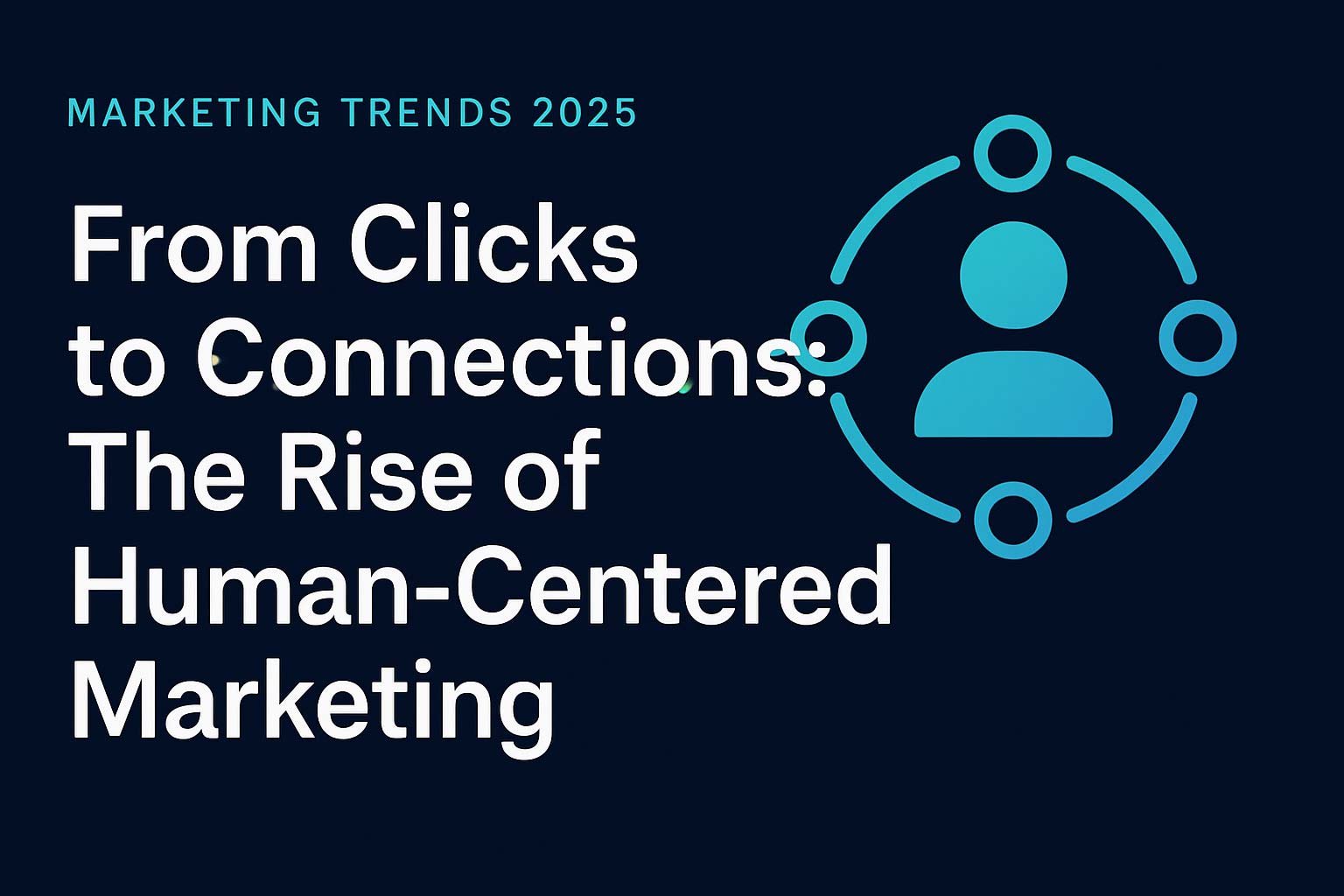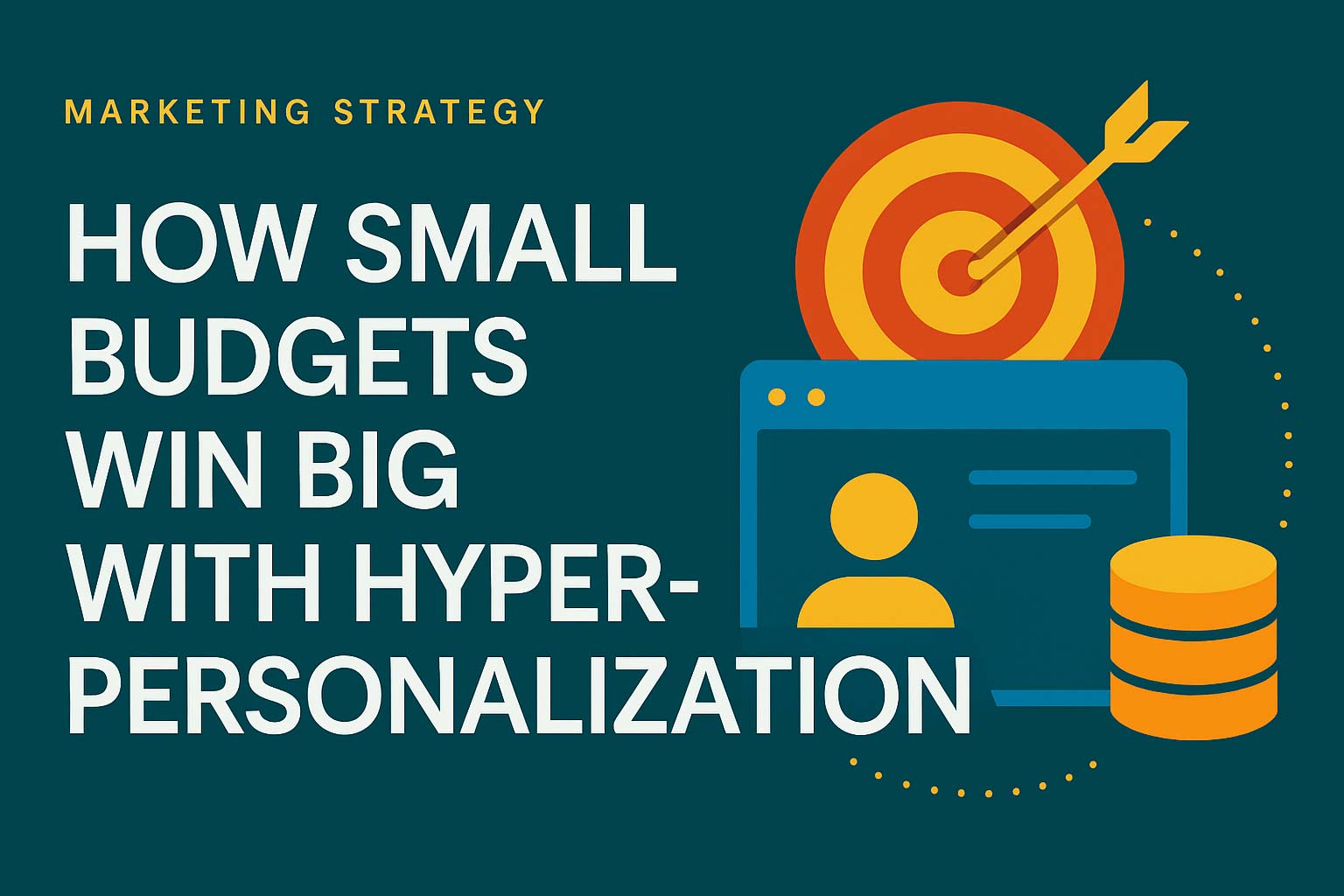The marketing landscape is experiencing a profound transformation. After decades of chasing clicks, impressions, and conversion rates, forward-thinking brands are discovering that sustainable growth comes from something far more valuable: genuine human connections. This shift from transactional to relational marketing represents more than just a trend—it’s a fundamental reimagining of how businesses build lasting relationships with their customers.
The Limitations of Click-Driven Marketing
Traditional digital marketing has long been obsessed with quantifiable metrics. Click-through rates, cost per acquisition, and conversion funnels dominated strategic discussions, creating a culture where success was measured in numbers rather than relationships. While these metrics provided valuable insights into campaign performance, they failed to capture the full picture of customer experience and long-term brand loyalty.
The click-centric approach often led to short-term thinking, where marketers optimized for immediate actions rather than building lasting connections. This resulted in intrusive advertising, aggressive retargeting campaigns, and impersonal mass messaging that frequently alienated potential customers. As consumers became increasingly sophisticated and ad-aware, the effectiveness of these tactics began to diminish dramatically.
Moreover, the focus on clicks and conversions created a disconnect between marketing teams and actual customer needs. Campaigns were designed to drive specific actions rather than solve real problems or add genuine value to people’s lives. This misalignment became increasingly apparent as customer expectations evolved toward more authentic, personalized experiences.
Understanding Human-Centered Marketing
Human-centered marketing represents a fundamental shift in how brands approach customer relationships. Rather than viewing consumers as targets to be converted, this approach recognizes them as complex individuals with unique needs, emotions, and motivations. The goal moves beyond driving immediate transactions to creating meaningful experiences that resonate on a personal level.
This marketing philosophy prioritizes empathy, understanding, and genuine value creation over aggressive sales tactics. It recognizes that modern consumers are overwhelmed with marketing messages and crave authentic connections with brands that truly understand their challenges and aspirations. Human-centered marketing seeks to build trust through transparency, provide value before asking for anything in return, and create experiences that customers genuinely appreciate.
The approach also acknowledges that customer journeys are non-linear and highly personal. Instead of forcing prospects through predetermined funnels, human-centered marketing adapts to individual preferences, behaviors, and contexts. This flexibility allows brands to meet customers where they are, both literally and figuratively, creating more natural and comfortable interaction patterns.
The Psychology Behind Connection-Based Marketing
Human beings are inherently social creatures who seek connection, understanding, and belonging. These fundamental psychological needs don’t disappear when people interact with brands—in fact, they become even more important in our increasingly digital world. Connection-based marketing taps into these deep-seated human needs to create more meaningful brand relationships.
Trust plays a central role in human psychology and decision-making. When people feel understood and valued by a brand, they develop emotional connections that go far beyond product features or pricing. These emotional bonds create loyalty that withstands competitive pressures and market fluctuations. Research consistently shows that emotionally connected customers are significantly more valuable over time than those driven purely by rational considerations.
The concept of reciprocity also influences how people respond to marketing efforts. When brands provide genuine value, insights, or solutions without immediately asking for something in return, customers feel a psychological obligation to reciprocate. This natural human tendency makes value-first marketing strategies incredibly powerful for building long-term relationships.
Social proof and community belonging represent additional psychological drivers that human-centered marketing leverages effectively. People want to be part of something larger than themselves, and brands that create genuine communities around shared values and interests tap into this fundamental need for connection and belonging.
Building Authentic Brand Relationships
Authentic relationships begin with deep customer understanding that goes beyond demographic data and purchase history. Human-centered brands invest significant time and resources in understanding their customers’ lives, challenges, aspirations, and values. This understanding comes through direct conversations, community engagement, and careful observation of customer behavior patterns across all touchpoints.
Transparency serves as the foundation of authentic relationships. Brands that openly share their values, processes, challenges, and mistakes build trust more effectively than those that maintain perfect facades. This transparency extends to product development, pricing strategies, company culture, and business practices. Customers appreciate honesty and are more likely to forgive shortcomings when they feel brands are being genuine.
Consistency across all touchpoints reinforces authenticity and builds reliable expectations. When customers receive the same level of care and attention whether they’re interacting through social media, customer service, or in-person experiences, they develop confidence in the brand’s commitment to their relationship. This consistency requires careful coordination across all departments and channels.
Personal communication plays a crucial role in authentic relationship building. Rather than generic mass messages, human-centered brands tailor their communications to individual preferences, interests, and contexts. This personalization goes beyond inserting names into email templates to creating genuinely relevant and valuable content for each customer segment.
The Role of Empathy in Modern Marketing
Empathy—the ability to understand and share the feelings of others—has become a critical marketing skill. Empathetic marketers can anticipate customer needs, identify pain points, and create solutions that genuinely improve people’s lives. This emotional intelligence enables more effective communication and stronger relationship building.
Developing organizational empathy requires systematic effort and cultural change. It begins with hiring people who naturally understand and care about customer experiences, then providing training and tools that enhance these capabilities. Customer service teams, sales representatives, and marketing professionals all need empathy skills to create consistent, caring interactions.
Empathetic marketing also involves understanding the broader context of customers’ lives. This means recognizing that purchasing decisions are influenced by factors far beyond product features and pricing. Economic conditions, family situations, career pressures, and personal goals all impact how people interact with brands and make decisions.
The practice of empathetic marketing extends to timing and channel selection. Understanding when and how customers prefer to receive communications demonstrates respect for their time and preferences. This consideration builds goodwill and increases the likelihood of positive responses to marketing efforts.
Creating Value-Driven Content Strategies
Value-driven content marketing focuses on helping customers solve problems, achieve goals, and improve their lives rather than promoting products or services. This approach positions brands as trusted advisors and valuable resources rather than just vendors. The content strategy becomes a service that customers actively seek out and appreciate.
Educational content that teaches customers new skills, provides insights into industry trends, or offers practical tips for common challenges creates genuine value that extends beyond immediate business needs. This type of content builds authority and trust while demonstrating the brand’s expertise and commitment to customer success.
Entertainment and inspiration also provide significant value in customers’ lives. Content that brings joy, motivation, or emotional connection creates positive associations with the brand. This approach works particularly well for lifestyle brands and companies whose products integrate into customers’ personal or professional aspirations.
Community-building content encourages customers to connect with each other as well as with the brand. User-generated content, discussion forums, and collaborative projects create networks of mutual support that enhance the overall brand experience. These communities often become self-sustaining sources of value and engagement.
Personalization Without Invasion
Modern customers expect personalized experiences but are increasingly concerned about privacy and data misuse. Human-centered marketing navigates this tension by practicing transparent, respectful personalization that clearly benefits the customer. The key is asking for permission and providing immediate value in exchange for personal information.
Behavioral personalization based on observed actions and preferences often feels more natural than demographic-based targeting. When brands use browsing history, purchase patterns, and engagement data to provide relevant recommendations or content, customers typically appreciate the improved experience.
Contextual personalization considers the customer’s current situation, location, device, and timing to deliver appropriate messages. This approach focuses on relevance rather than intrusiveness, making personalization feel helpful rather than creepy.
Progressive profiling allows brands to gradually build detailed customer profiles through ongoing interactions rather than demanding extensive information upfront. This approach respects customers’ privacy preferences while enabling increasingly sophisticated personalization over time.
Measuring Human-Centered Marketing Success
Traditional metrics like click-through rates and conversion rates remain important, but human-centered marketing requires additional measurement approaches that capture relationship quality and long-term value. Customer satisfaction scores, net promoter scores, and customer lifetime value provide better insights into relationship health.
Engagement quality metrics focus on meaningful interactions rather than simple volume. Time spent with content, return visits, social sharing, and user-generated content indicate deeper levels of customer connection and satisfaction. These metrics often predict long-term success more accurately than traditional conversion metrics.
Community health indicators measure the vitality and growth of customer communities built around the brand. Active participation rates, member-to-member interactions, and community-generated value creation demonstrate the strength of the relationships fostered by the brand.
Emotional connection metrics attempt to quantify the feelings customers associate with the brand. Brand sentiment analysis, emotional response surveys, and qualitative feedback provide insights into the psychological bonds that drive loyalty and advocacy.
Technology’s Role in Humanizing Marketing
Modern marketing technology provides powerful tools for creating more human experiences at scale. Customer relationship management systems enable personalized interactions across multiple touchpoints and time periods. Marketing automation can deliver relevant, timely communications that feel personal rather than mechanical.
Artificial intelligence and machine learning help brands understand customer preferences and predict needs more accurately. When used thoughtfully, these technologies can enhance human connection rather than replace it. The key is using technology to augment human understanding and capabilities rather than substituting for genuine care and attention.
Social listening tools provide insights into customer conversations, concerns, and interests that inform more empathetic marketing strategies. These platforms help brands understand the broader context of customer experiences and identify opportunities to provide value and support.
Data analytics platforms can identify patterns and trends that human analysts might miss, but the interpretation and application of these insights still requires human empathy and creativity. The most effective human-centered marketing combines technological capabilities with human understanding and care.
Building Organizational Culture for Human-Centered Marketing
Successful human-centered marketing requires organizational culture that genuinely values customer relationships over short-term profits. This culture must be modeled by leadership and reinforced through hiring practices, performance metrics, and daily operations. Every employee, regardless of their role, needs to understand their impact on customer experience.
Cross-functional collaboration becomes essential when the entire organization focuses on customer relationships. Marketing, sales, customer service, product development, and operations teams must work together to create consistent, caring experiences. Silos and departmental conflicts undermine the unified approach that human-centered marketing requires.
Employee empowerment allows front-line team members to make decisions that benefit customers even when they don’t immediately benefit the company. This empowerment demonstrates genuine commitment to customer relationships and often creates powerful positive experiences that generate long-term loyalty.
Continuous learning and adaptation help organizations stay aligned with evolving customer needs and expectations. Regular customer feedback collection, team training, and strategy refinement ensure that the human-centered approach remains effective and relevant.
The Future of Connection-Based Marketing
The trend toward human-centered marketing will likely accelerate as technology becomes more sophisticated and customers become more selective about the brands they engage with. Companies that master the balance between technological capability and human connection will have significant competitive advantages.
Emerging technologies like virtual and augmented reality will create new opportunities for immersive, personal brand experiences. These technologies can enhance human connection when used thoughtfully, creating shared experiences that would be impossible in traditional marketing channels.
The growing importance of social and environmental responsibility will further emphasize the need for authentic, values-driven marketing approaches. Customers increasingly want to support brands that align with their personal values and contribute positively to society.
Privacy regulations and customer expectations will continue to evolve, requiring marketers to become even more skilled at creating value-driven, permission-based relationships. The brands that succeed will be those that earn and maintain customer trust through transparent, beneficial interactions.
Implementing Human-Centered Marketing Strategies
The transition from clicks to connections requires systematic planning and gradual implementation. Organizations should begin by auditing their current marketing practices and identifying areas where more human-centered approaches could improve customer experience and business results.
Customer research and feedback collection provide the foundation for human-centered marketing strategies. Regular surveys, interviews, and observation studies help brands understand what customers truly value and how they prefer to interact with companies.
Content strategy redesign should focus on creating genuine value for customers rather than promoting products or services. This shift requires new content creation processes, different success metrics, and often additional resources for quality over quantity approaches.
Team training and development help marketing professionals develop the empathy, communication, and analytical skills needed for human-centered marketing. This investment in human capital is essential for long-term success in relationship-focused marketing approaches.
Conclusion: The Sustainable Path Forward
The shift from clicks to connections represents more than a marketing trend—it’s a return to fundamental business principles that prioritize long-term relationships over short-term transactions. As digital noise continues to increase and customer expectations evolve, brands that master human-centered marketing will build sustainable competitive advantages through genuine customer loyalty and advocacy.
The future belongs to companies that understand that behind every click is a human being with complex needs, emotions, and aspirations. By focusing on creating meaningful connections and providing genuine value, these brands will not only achieve better business results but also contribute to a more positive, customer-centric business environment.
The journey from clicks to connections requires patience, investment, and cultural change, but the rewards—both for businesses and their customers—make it the most promising path forward in modern marketing. The brands that embrace this transformation today will be the market leaders of tomorrow.



